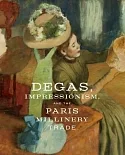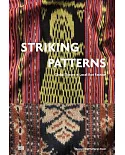This lavishly illustrated book showcases fifty-five masterworks by Japanese kimono artist Itchiku Kubota (1917-2003). Initially determined to unlock the secrets of dyed and painted Japanese
textiles of the fourteenth to early seventeenth centuries, Kubota ultimately invented a unique method of decoration. His work combines stitch-resist and ink drawing with a complex layering of
color to achieve hauntingly beautiful landscapes with richly textured surfaces and an impressionistic rendering of nature never before seen in the textile arts.
Although Kubota produced kimono for Japanese celebrities, his primary endeavor was the creation of a series of monumental kimonos intended only for display. Mount Fuji, Universe, and the
thirty-four-piece Symphony of Light are his most important series. The latter two are intended to be shown sequentially, much like the panels of a Japanese screen or decorated sliding doors.
This entirely new approach to the use of the kimono as a vehicle for pictorial imagery has enabled Kubota's work to reach beyond the traditional boundaries of the single garment and elevated
his work to installation art.
This book accompanies a touring exhibition and features essays by Dale Carolyn Gluckman, Asian textile specialist and former costumes and textile curator at the Los Angeles County Museum of
Art, and Hollis Goodall, curator of Japanese art at LACMA, as well as an interview with Mr. Kubota's son and artistic heir, Itchiku Kubota II, by Derrick Cartwright, Director of the San Diego
Museum of Art.





















